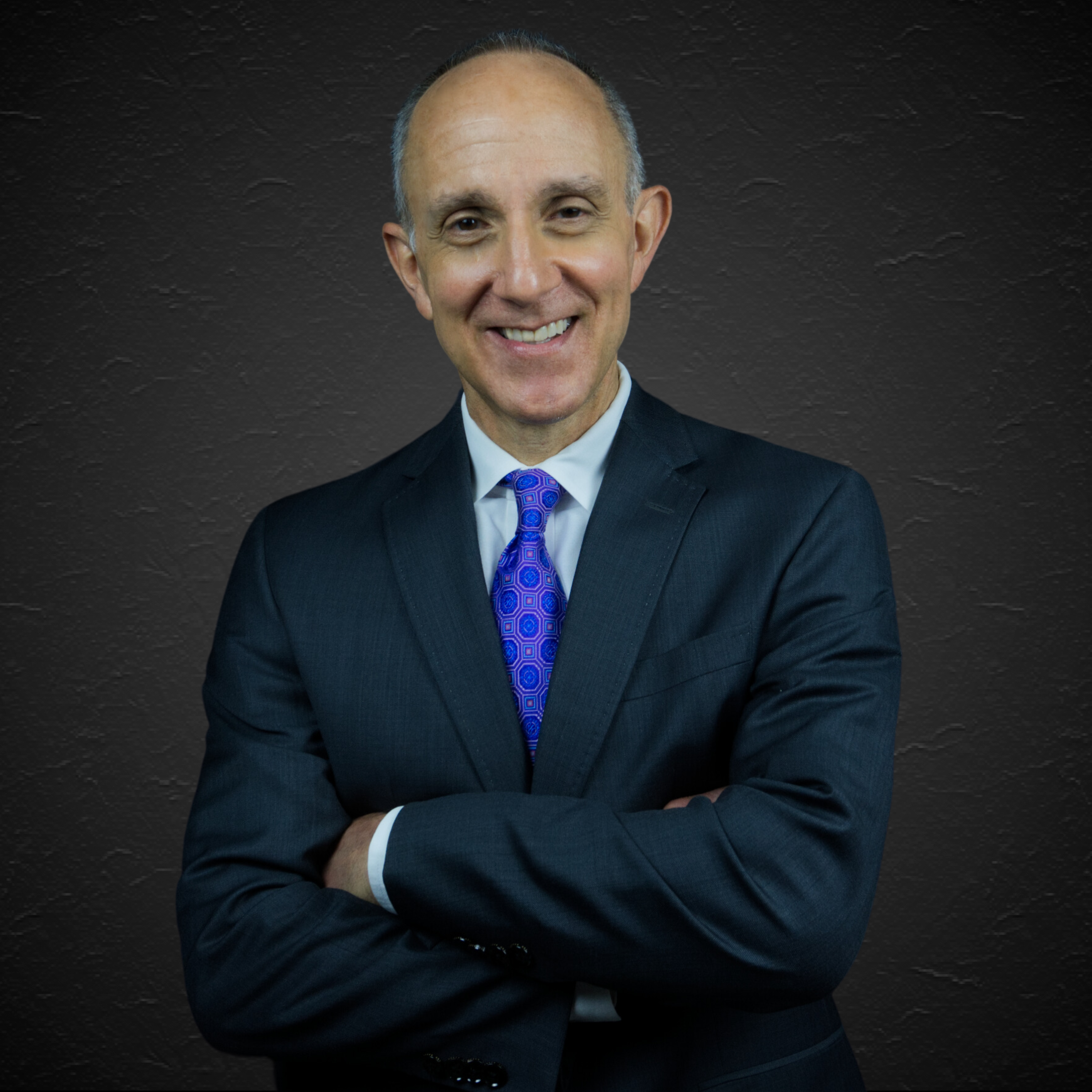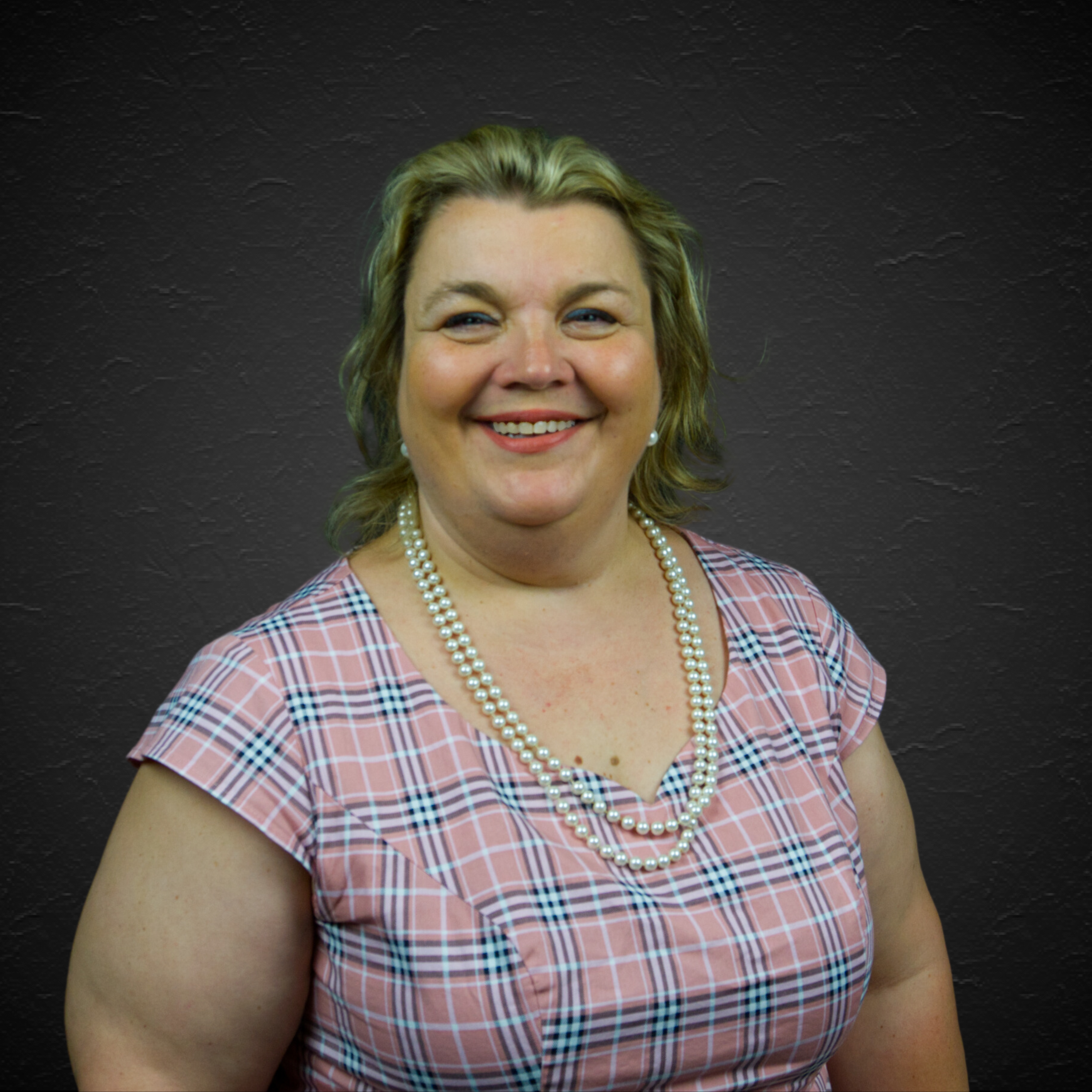Episode Transcript
Welcome to Not Another TV Lawyer. I'm Chris Shakib. I'm Jessica Hall. And this is a podcast sponsored by the law firm Terrell Hogan that's been in Jacksonville for greater than 50 years. And we are very passionate about helping people and personalizing our service to help them get the service they deserve.
I'm Chris Shakib, an attorney with the law firm Terrell Hogan. With me is Jessica Hall, my fearless paralegal. I'm And, uh, it's another episode of our podcast, Not Another TV Lawyer, and today we are fortunate to have as a guest Brian Pfeifer, who is from Q Forensics, and,, He and his company are experts in getting data from crashes in a way that's, uh, it's really cool and interesting and helpful.
And, uh, so we're excited to have him here. Uh, Brian, uh, first of all, welcome to our podcast. Well, thank you very much. It's, uh, it's nice to be here this morning. The first season of the podcast, we've been focused on. Motor vehicle accidents, uh, you know, whether it's a car accident, car, truck accident, truck, truck accident, just everything we can deal with or talk about related to a car accident or a motor vehicle accident.
And so we wanted to have you on because your company has done. It for my law firm, some really amazing work in the past, uh, you know, in getting information about motor vehicle accidents. And so could you, could you tell us exactly what Q forensics does? Uh, yes, absolutely. Uh, so Q forensics is a, is a full service forensic engineering firm.
So we do, uh, we, we take our engineering. knowledge and the tools that we have as engineers to help understand and be able to understand and develop a theory of how a collision occurred and then be able to prove that to establish how things happened and how they could have been avoided. And so we do everything from, uh, you know, premise liability cases.
We have biomechanical engineers that'll look at injury causation. We look at product liability cases. Uh, but, uh, but a majority of the work that we do, and what we're here to talk about today, is automobile accident reconstruction. So whether it's , a sedan hitting a pickup, a trucking case, whether it's a bicycle case, all of those things involve the dynamics of a collision and I got interested in this very early on in my career when I was doing crash test research, actually, um, back at the University of Nebraska and we were designing and developing roadside safety devices and I would set up an instrument vehicles and crash them.
So I, I, We developed this interest from a very early on age, and I've been doing this for 20, almost 27 years now. It's very exciting, uh, aspect of engineering, especially when, you know, we see how we can make a difference, uh, in a case, and make a difference in people's lives when we're able to, uh, to, to gather the information, interpret it.
and be able to explain what happened. I'm sure it's never boring, because no case is precisely identical, even if the factors, maybe it's a car versus car or whatever, but No case, no one case is ever the same, so I'm sure there's different data from, from each incident so it never gets boring. Oh, absolutely.
The uh, uh, my job, I'm very blessed to have a very exciting job, I've uh, uh, I've been able to look at uh, you know, a huge variety of, of different types of incidents and accidents and the technology has changed so much over the years that, um, there's Not only is every case a little bit different, but every day, or at least every year, we're getting new technology that we can utilize, um, uh, to help us better understand, the events and be able to understand what happened in the collision.
Yeah, I mean, I've been handling car accidents. I stopped. I left the state attorney's office here in Jacksonville in 1996 and started handling, uh, injury cases, mostly car accidents. And, you know, I remember if we had a serious enough acts, it had to be a really serious accident because it was Uh, you know, the, to hire someone like your company, uh, was relative to the cost of the case would, you know, it was just hard to do.
Uh, and we had, you know, we, there was a limited amount of information. I remember sometimes there would be some electronic data in a car to car accident, but not much. And if the car broke down, Let's say one of the cars was driven, you know, sometime afterward, or, you know, and, If the car hit its brakes or had a certain number of stops, it would eventually clear everything out and there wouldn't be anything there.
And I, I don't know how many times that, uh, you know, we'd hire someone to try to get the information and there just wasn't anything to get. Uh, that was, uh, You know, starting 20 some years ago, going forward, has it changed? Oh, yes, absolutely. And, uh, you know, my, my timeline in this business is very similar to that, starting in the, in the late 90s.
And, uh, at that time, uh, we were, uh, you know, very happy to be able to get any kind of electronic data, uh, from these, these vehicles that started. There were just a few vehicles that you could get minimal data from, if you were lucky. That's one of the things that's changed tremendously in the last 20 years.
25 years, even in the last 10 years, uh, because we're able to get, uh, you know, starting in 2012, it's required that all vehicles, uh, be, be capable of, of recording information from a collision. And so, uh, it varies from make to model, how much information you're going to get, , but we can get, Great information, uh, after a collision, even if the airbags didn't go off.
Uh, we're able to get, um, great information like speed and braking and, and steering, um, and throttle position. A lot of good information that can tell us, uh, Uh, help us with, you know, not only understanding how the collision itself occurred, like how fast people were going, what direction they went afterwards, but also gives us information on what was happening before, which can be very important when we're trying to understand, uh, the totality of what, what happened, uh, in the events leading up to the collision.
So give me an example of the kinds of things you might find out that were going on before the crash that would be helpful. Uh, yes, absolutely. So. Uh, the, in, in a crash, in a, uh, passenger vehicle crash, uh, we get the data from what's called an airbag control module. So it's the module that's controlling whether your airbag, uh, is going to go off or not.
And those will typically store five seconds of data, Uh, prior to the, uh, prior to that collision, when the airbag went off or when it woke up and thought that it might need to go off. And so we can get, probably the most, one of the most important things there is speed. It'll record your speed in either one second or half second increments or some, some even, even faster than that.
But it'll also include information on braking. And whether they're, the person was braking, some of them even how hard, you can break pressure as well. Um, you can get, uh, steering data on, on a lot of these vehicles as well. Um, and then in some of the newer vehicles, uh, you can actually even get, uh, snapshots, actual, pictures of what was happening in the, in the time leading up to, uh, that collision.
Uh, because, um, there's the collision avoidance system that a lot of you are probably familiar with, um, in your vehicle that, um, alerts you if you're coming up too close behind the car in front of you, or alerts you if, uh, you're, you're going out of your lane of travel. Those are based on, uh, on, on video, uh, uh, And so we can actually get some of those snapshots and tell the story of what was happening beforehand.
It's a, it's a great witness when, when you don't have witnesses elsewhere. Now, is this just true for, say, for instance, like a Tesla that has, you know, a lot of, you know, A lot of bells and whistle computer things in it, but what about, you know, like, say, a Ford F 150? Is there still available information in F 150s, too, or?
Yes, yes, absolutely. Um, all of the information, except for we don't usually get. Snapshots of pictures from something like an F 150. Those are the newer Toyota models and some of the new GM models are starting to have that as well. But, basically, any vehicle out there that is 2012 or newer, you're going to be able to get some data.
And then a lot of the vehicles that are even older than that, even back to 2000, you're going to get some data. Possibly some data, but it's important to be able to, to, we have to access the vehicle in order to do that. So that's why it's important, uh, for us to be brought in early on in the case while the vehicle is still available.
So we can use these tools to help understand what happened. We can download the vehicle. We can, you know, take pictures, measurements. We have, great technology. We, can scan the vehicle, have a three dimensional model of the vehicle that we can use for analysis. And, uh, and then it's also important for us to get in early, especially to go to the scene.
Uh, because one of the, one of the services that, uh, that our company provides is, is documentation. So a lot of times if a case comes in, um, You don't know necessarily what all the issues are. We've got a team, a rapid response team that will get out there and document the scene and the vehicle, get that information so that we have it, um, and then we can decide how to move forward.
And so the, it's important to preserve the vehicle if we can, but, uh, but getting out to the scene is even more important because that information, Disappears very quickly. Skid marks, the like. And you know, I've seen this, um, in, uh, in a, in a crash that involves a death in Florida, you'll usually have a, uh, a halfway decent crash investigation because they, by, by statute, they're required to do that.
And so there'll be photographs, there'll be, there'll be a lot of things, uh, compared to your, your non fatal accident. And, uh, in my experience in the non fatal accidents, depending on who responded to the crash, there's very little available. There'll be a crash report and maybe a diagram of the crash, but it's really rudimentary.
It's it's not much. Uh, And, you know, I don't, it's not a lot for us to go off of. No, there's like a little, a little scratch that looks like it was done by a child. And then you're like, huh, trying to figure out where the vehicles went. And so it's, it's really great that your company is able, um, we've, we've personally been able to use your services in multiple cases and the drone footage that y'all have, when you can go out, for example, let's say interstate 10 or interstate 95 and you can map out the whole area and get like a bird's eye view of everything in more detail.
It's phenomenal. Uh, yeah, yeah, that the tech and that's another aspect of the technology that is, that's great. You know, when I started this industry, we were out there, you know, we get out there as soon as we could take pictures, maybe get a few measurements. but now, we get out there, we put our drone up in the air and.
And not only can we get get great pictures of that evidence that we can use for the analysis, but we can also, , map the area with that drone and we get a very nice three dimensional model of the whole area, uh, so that it's, it's, it's documented as to what, uh, what it looked like at that very moment.
So hopefully it's Very close to the time of the collision. Mm hmm. So it can be preserved. Like, you know, one of the cases we worked for you, it was a crossover collision. Mm hmm. Um, out on, uh, on Interstate 10. Mm hmm. And, uh, so we were able to get out there, and there's a lot of evidence there. We were able to preserve that.
So much data came from that that we would not have had access to or known about that had it not been for you and your company to be able to help us. Yeah, so that, that, that helped, uh, tremendously in understanding the issues in the case and and your ability to get it resolved. I mean, in years past, what we used to have to do is go to the florida Department of Transportation and get whatever their most recent aerial photo of an intersection that they had.
And that's as good as that was cutting edge back in, you know, back in the, in the nineties. Um, but there's just so much more. But again, would it be fair to say that the sooner people If you're in a crash, uh, the sooner you first get an attorney involved, who can then get someone like you involved, get your company involved, uh, that's one of the most important things.
Absolutely. It's the most important thing, certainly from our perspective, from an accident reconstruction perspective. Because, I don't know how many times, you know, I've had, The, you know, I get an accident report and, uh, like Jessica says, that's the, that's all that we have. And, uh, we can, we can build on that, uh, but time is our enemy in that case.
And so, we, we need to get out to, to see the scene. And, you know, you're talking about, uh, you know, DOT maps. You know, we've got a lot more than that these days with Google Earth and Some, some tremendous stuff, but you know, back 25 years ago, we would have to hire a private pilot to fly over and take pictures of it.
Now, every, all of our technicians and engineers have a drone with them. They, they put it up and, and everything is, is, is documented. Uh, but we've got the scene and then you've got the vehicles that especially if they're totaled, they're going to disappear very quickly. And so it's important from our perspective, uh, and from your perspective to get on that case as soon as possible so that we have the, uh, the evidence, the information that we need to, to work with it, do our job and to help you with the case.
Yeah, I mean, in contested liability cases where one person saying one thing happened, the other thing, I mean, if you get to the vehicles in time, if you, nowadays you can actually Get an answer. I mean, where you take it out of one person's testimony versus another, it becomes more scientific reality.
Exactly. And that's, that's our, that's our job. You know, we, we take into consideration what the witness testimony is, what the drivers are saying. But We, you know, for, for us, it comes down to science. It comes down to engineering. And the data's not going to lie. There's a potential, unfortunately, for the witnesses involved or the parties involved to be like, Oh no, no, that never happened.
And your car is going to tell on you either way. Like whatever was happening up before your crash, your car is going to, your car is going to tell on you. So that's, that's really, but nobody knows how to get to that information. And so nobody knew, well, there's a limited. Information that the information exists.
I think people are more familiar with black boxes on airplanes, and that's sort of what y'all do as well, is you get the black box data from the vehicles. Yeah, yeah, exactly. So that's, that's what we compare it to, and what a lot of people call the, the airbag control module, a black box, because that's essentially what it is.
It, it is, is, uh, It provides us with a lot of really good data to be able to help with the analysis. So we've got the physical aspect of what evidence we have, the crush energy, how much damage there was to the vehicle, where it is, what direction that force came from, but then also skid marks, gouge marks.
Those are all pieces of the puzzle that we get to put together. And the electronic data Uh, that we get from the black box is, uh, provides us with, with some great information to be able to, uh, to, to add to our toolbox. And the drone footage, the drone footage is impeccable. And I think it's kind of interesting how drones went from this recreational, basically like a remote control version of a car, you know, essentially, And now, you have the ability to use it to reconstruct an accident.
How, how cool is that technology wise? That is really amazing. Well, it, it really is. And, uh, the, you know, the drones that we use are, you know, they're, they're GPS controlled. So, they're, they're very stable. Uh, I remember. You know, some of my first experiences with the, with the drones were my, my nephews got one for Christmas.
And playing in the backyard or something, yeah. Yeah, and you put it up and the wind came and it blew away and it was gone. Yeah, yeah. It's, it's come a long way, uh, from that. We have, you know, we can, we can map the scene out. As we go there we can say, this is the area we want mapped up. Uh, we push a button and it goes up there and it, it, uh, It does all of that, you know, we get all that information, we put it into our system and make a very detailed map of that evidence.
It's something that when I started this business you could only dream of. Right. I remember, uh, you know, some from serious crashes that I was involved in in the, I guess the late 90s, early 2000s. Uh, We would have animations created, but they were, they were basically going to the scene of the crash, taking down a lot of measurements and creating the animation from measurements and everything, uh, at the scene.
But with With the drone, you basically can get that information from the drone and just download it directly to where you're not having to create it from a whole cloth now. Well, exactly. And I'm glad you mentioned that because, you know, animations are a demonstrative aid that we'll use once we've done the reconstruction to be able to illustrate what happened.
But we also use, uh, computer simulations, uh, which in, with the computer simulations, , we can import that environment from our drone mapping. So we have that environment, we put vehicles in there, and there are science-based based algorithms that help us to recreate that, um, and, and simulate it. So it's, it's not just an animation showing what happens.
It's an actual tool that. Um, that we use to be able to understand how that collision occurred. Uh, and then it, it's the quality, uh, these days we can get from the simulations is, is animation quality. So not only can you use it as a tool to understand how things occurred, you can put a camera anywhere and see, okay, what was this driver's, uh, viewpoint.
Um, and then you can utilize that to help if it ever gets to the point where we go to trial, we can use that to, uh, to show the jury, um, How we did the analysis and what our findings were, and it's, and it's very, uh, user friendly at that point. Yeah, I mean, animations were a, in the past, we would say, well, this is a representation of what we think happened.
But I, you know, with the data that's available now, it seems like an animation is more of a representation of what actually happened. Uh, it's, it's a lot closer, yes, because we have, Uh, you know, the, we have the science behind it, and so we're able to, in, in most cases, um, depending on how much information is there, have a very good idea of, of, of what happened in the events leading up to, during, and, and after the collision.
Whether it's, uh, the movement of the vehicles, uh, the movement of the body within the vehicle, Uh, or any, uh, some external source and, and how that might have, uh, come into play. Uh, whether it was a construction zone and was it, uh, properly marked, uh, what was the visibility, was the visibility obstructed of someone?
All things that, uh, that we can use the, uh, the, the simulations in this, this modeling to help us, uh, better understand. It's the closest thing to actually. Because nobody's ever actually at the scene except the parties involved when the scene happens. So it's the closest thing that we can get to actually being at the scene with your data and your reproductions and things like that.
So it, it, it gives us a much better understanding of what actually transpired and what happened. Well, yes, absolutely. But, you know, as you mentioned that there, there is, there's also something we haven't talked about yet, which is his security footage. I was about to say that you said nobody. Actually, there are cameras, uh, owned by DOT, owned by municipalities, owned by private citizens, where you can Is that part of something that you work with also?
Oh, absolutely. Um, you know, whether it's, uh, the law office's investigator that goes out and canvasses it, or our engineer or technician that goes out there, we'll go canvass the area and do it. Talk to the folks in the gas station or the convenience store, um, and, and see if they have video and, and if we can get that and, uh, and start the ball rolling with that.
And probably about, A quarter to a third of the collisions that we investigate these days has some sort of video. Excellent. So a lot of the trucking companies will have dash cams in their trucks, which gives us a lot of information, , but then, just, security video, , is just becoming.
Uh, so much more common and we can actually take that security video and break it down frame by frame and be able to do some analysis of that to understand, to place vehicles, pedestrians, bicyclists, to understand, um, where they, how they were moving before and after this, this collision. And how fast they were going, we used the, the frame rate and thing, something called photogrammetry to, to put all that information together.
It's a, it's a whole nother, uh, of what we've done and another of what we do on a regular basis. And another thing that's, uh, that's exciting about the business because we get more and more of that information and the technology available to analyze it, uh, gets better every day as well. That's phenomenal.
I mean, I, uh, as an example of the, uh, security, security cameras. There was a, a client who, uh, came to me, uh, with a crash that happened in San Marco, a particular place in San Marco. And, you know, he was hurt pretty, I mean, it, it, it was, uh, Yeah. And the, the location of the crash, there, there's, I, I just happened to know someone who lived kind of close.
to where the crash happened. And we got contacted and said, there's no chance you have security video. And he did. We were able to actually get video of the crash, the actual crash, just because he had this security camera out there. It was amazing. It made a difference in the case. And these things are everywhere nowadays.
Yes, yes, they are. There are even, there are companies, you mentioned DOT cameras, which are, you know, they're out there used for. Uh, mainly to, to monitor for traffic conditions and things like that. Uh, but there are some, but in, historically, they haven't been recorded. It's live footage only. There are some companies out there that we work with, uh, that are getting contracts with the DOTs, um, to, to actually, uh, record that information.
And then they have AI, uh, systems that can look through and find, uh, Crashes. And so you can, you know, we work with them to try to find video from these DOT cameras as well. And, you know, that's just one example of, of how this, uh, you know, the technology and the availability of this information is growing over time.
I mean, when I think of the way it is today versus just 10 years ago, it seems night and day different. I mean, there's so much more available. Uh, correct. I mean, the, the, uh, you know, the collisions are, are still happening and a lot of them are still happening in the same way. But our ability to analyze them and understand, uh, how things happened and.
You know, how things could have been avoided has, uh, is increased exponentially. What about, alright, the focus of this, uh, this season, uh, of the podcast is, Auto crash, auto crashes, motor vehicle crashes, but, uh, you said that your company also can do work in other types of injury cases, for instance, trip and falls or, you know, premises liability cases.
Tell me a little bit about what you do in those cases. Uh, yes, certainly, we have Uh, we have engineers that, uh, focus more on, on those areas with regards to, uh, like you say, slip and falls or trip and falls, uh, uh, premise liability is, is the category that we look at. You know, was there, uh, was there something wrong?
Was there some code violation perhaps, um, with these, these steps, um, that caused, that contributed to this trip? And so we look, we can look at it both from a, uh, perspective of, uh, Uh, code violations and how the incident occurred. Uh, but also from a biomechanical perspective of how that happened. You know, was it, was it a trip?
Was it a slip? Um, and, and was it this, this hole in the ground that caused it? Uh, or, or not? So we can look at that. You know, look at those types of things. And then also things like, uh, like fires, um, fire causation. If there's a vehicle fire or, or a home fire, where did it start? We've got an expert that has a lot of experience in that area that can, that can talk about that.
Uh, if there's a, a product, you know, product failure. So, we're, you know, we're an engineering company. Uh, we, we understand how things are, um, are designed, how things are, are built, and how they fail. And so, whether it's a, we've got a, uh, uh, one of our engineers has a lot of experience in, uh, tire failures. Um, he's worked in the tire industry for years.
So he can look at those, look at the tire, and decide, be able to understand how that failed, um, or it might be a, an actual machine that someone got hurt on. Was it properly designed? Was it properly maintained? Was it user error? Those are all things that, uh, that we, we can look at and, uh, assist in the, uh, evaluation of the instance.
It has been a pleasure having you on our podcast, Not Another TV Lawyer. If someone wanted to hire your company for these services that you described, how would they get a hold of you? Well, uh, there are a couple of ways. Um, our, our main number, uh, the main phone number is 850 583 5540. And, uh, Uh, we can be emailed at info at QForensics.
com. So that's Q F O R E N S I C S dot com. Uh, and then you can also go to our website, www. qforensics. com, and, uh, find out about the, uh, you know, all the great folks we have on our team, uh, and, uh, contact, contact us through that portal as well. Well, we really appreciate you being our guest today and, uh, we really appreciate having you here.
Thanks again for listening to Not Another TV Lawyer. We hope that you will tune in to the next episode. Not Another TV Lawyer is sponsored by my law firm, Terrell Hogan Law. Terrell Hogan represents people in a lot of different areas of injury type law, as well as business claims throughout the state of Florida.
We represent people in auto accidents, trip and falls, people who have been exposed to asbestos and developed conditions related to that. Victims of medical negligence, victims of defective products, including medical devices and pharmaceuticals. Please feel free to look us up at www. terrelhogan. com. We look forward to hearing and being with you soon.





